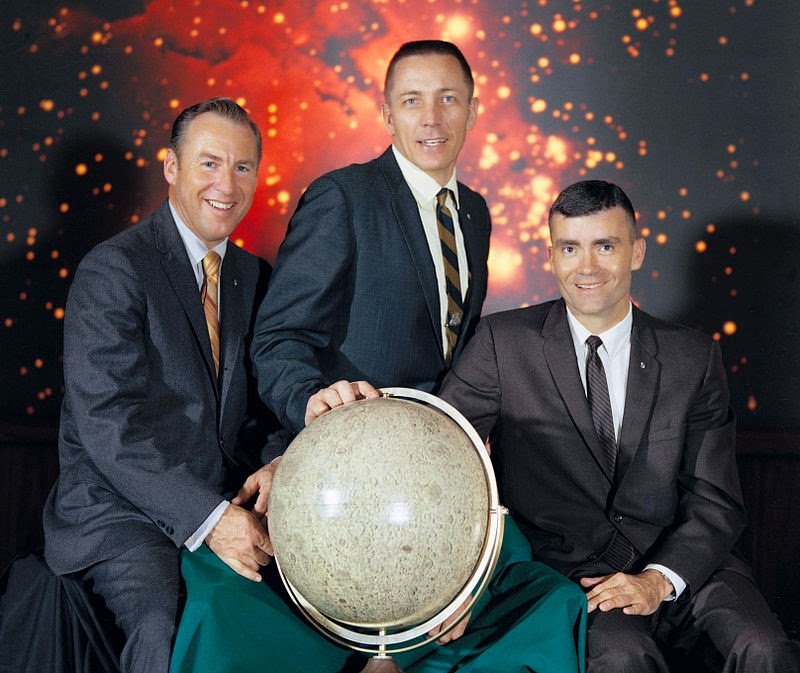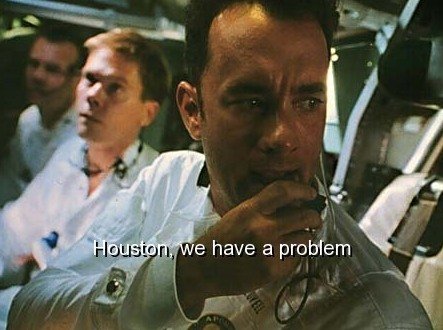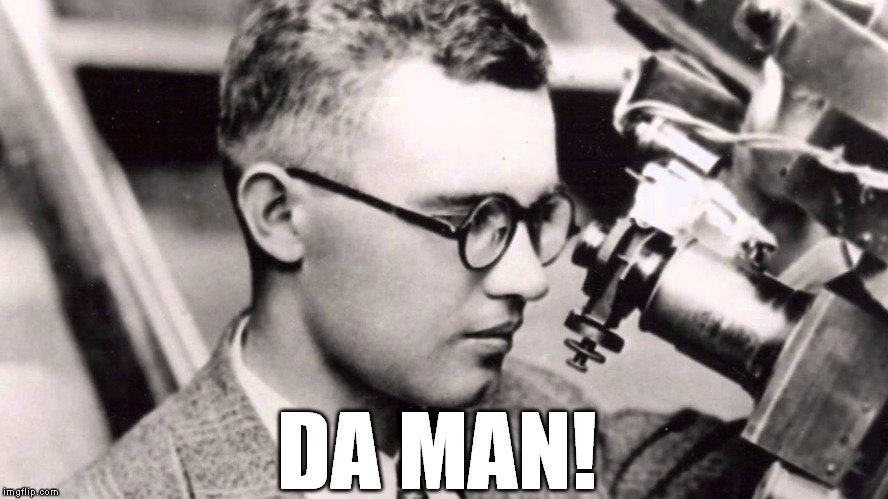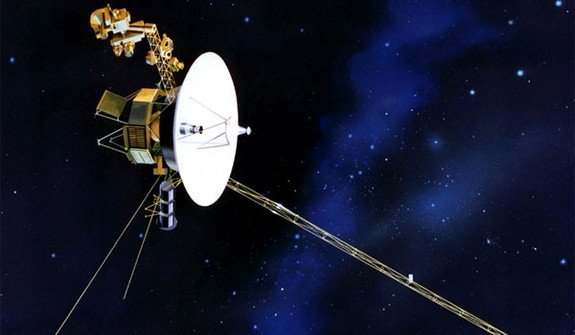Table of Contents (click to expand)
The record for the farthest distance that humans have traveled goes to the all-American crew of the famous Apollo 13 shuttle, who were 400,171 kilometers (248,655 miles) away from Earth on April 14, 1970.
Have you ever looked up at the night sky and been overwhelmed by the sheer vastness of it all? Have you ever thought of reaching through the endless sky and grabbing a star or two?
Scientifically implausible fantasies aside, do you know the farthest point in space where humans have left their mark?
You’ll have to consider two different scenarios here. First is how far humans have traveled in space, and second, how far humans have made their presence felt in space. The answers to these questions are different. Let’s look at them one at a time.
What’s The Farthest That Humans Have Ever Traveled?
Fateful Apollo 13
The record for the farthest distance that humans have traveled goes to the all-American crew of famous Apollo 13 who were 400,171 kilometers (248,655 miles) away from Earth on April 14, 1970. This record has stood untouched for over 50 years!
The story of Apollo 13 being the spacecraft to carry humans the farthest resulted from an accident. The saga is so interesting that there was an entire Hollywood movie of the same name released in 1995.
Apollo 13 was the third manned mission intended to land on the moon, and only the seventh space mission in the entirety of the American Apollo Space program. The three-member crew lifted off from the Kennedy Space Center in Florida on April 11, 1970. Those three members were Jim Arthur Lovell, Jack Swigert, and Fred Haise.

James Arthur Lovell, popularly called Jim Lovell, was the commander of the Apollo 13 mission. Lovell had also served as a backup commander for Apollo 11 at an earlier date. Interestingly, he was scheduled to command Apollo 14, but was then swapped to command Apollo 13 instead.
Jack Swigert was a mechanical and aerospace engineer, who had also served as a United States Air Force pilot. He was the Commander Module Pilot for the Apollo 13 mission. Again, interestingly, like Jim, Jack was also not originally commissioned to fly on Apollo 13. However, when another astronaut Ken Mattingly contracted the German measles (which allegedly never happened!) three days before the launch, Jack was brought in as a last-minute replacement.
Fred Wallace Haise, another American fighter pilot with the U.S Marine Corps, was the final part of the Apollo 13 trio. He was inducted into the NASA Astronaut Group 5 in 1966. He was assigned the duty to captain Lunar Module on the Apollo 13 spacecraft.
These three men are the record holders to reach the farthest distance from Earth on their infamous Apollo 13 spacecraft.
Apollo 13 Modules
You might be wondering about the ‘modules’ that we are referring to. Well, the Apollo 13 spacecraft had three main modules: Service Module (SM), Command Module (CM) and Lunar Module (LM), all of which served different purposes in the space mission.
The first module, the Service Module, was designed to provide main consumables, such as water, oxygen, and power to sustain the voyage in the space. It was the primary propulsion area of Apollo 16 and the first fault (which we will cover shortly) during the voyage occurred here. Next was the Command Module, the main controlling area of the spacecraft with a crew compartment. One important purpose of this module was to bring the crew safely back upon re-entry. Finally, there was the Lunar Module, which was designed to land on the moon. It also had living quarters for the trio. This module played an important role in saving the astronauts when chaos broke out.

Houston, We Have A Problem
The original mission of Apollo 13 was to land on the lunar surface and explore the Fra Mauro formation (or the Fra Mauro Highlands) named after the ~60 miles diameter Fra Mauro crater located within it. However, its primary objective was scrubbed after it sustained an explosion in the oxygen tank of the Service Module, which in turn crippled the Command Module. Limited power, a shortage of potable water, and a loss of cabin heat were just some of the glaring problems that prevented the crew from landing on the lunar surface as planned.

For the safety of three astronauts, a team of scientists and engineers at Houston came up with a life-saving idea. In order to bring the trio back to Earth safely, they directed the astronauts to pilot the shuttle into a free return trajectory, using the Moon’s gravity as a slingshot to return to Earth.
To achieve this, the shuttle passed over the far, or “dark” side of the Moon at an altitude of 254 kilometers (158 miles) from the lunar surface, making it the farthest that humans have ever traversed into the vast expanse of the universe. This landmark was attained on April 15, 1970, at 0:21 UTC. It has been more than five decades since that historic moment of 1970, and we haven’t been able to surpass the record yet!
New Horizons: Spaceship Carrying Ashes Of Clyde Tombaugh
If you want to get even more technical about humanity’s presence in space, we have gone much farther than the moon. A spacecraft called New Horizons, launched in 2006, carried the ashes of Clyde William Tombaugh, the man who discovered Pluto, to Pluto!

The story of Clyde Tombaugh is also as riveting as the astronauts of Apollo 13. Clyde was originally a farmer who tinkered with agricultural tools and remnants to make his own telescope. Somewhere in his early 20s, he happened to come in contact with someone working for the Lowell Observatory and his design of a telescope was passed along to this observatory. Impressed by his design and detailing of the telescope, Tombaugh was offered a job at the Lowell Observatory, which he accepted!

Before his death in 1997, Tombaugh had expressed the wish to have his ashes launched into space after his death. Honoring this wish, NASA attached his ashes to the probe of the New Horizons spacecraft, which was launched in 2006. An inscription attached reads: “Interred herein are remains of American Clyde W. Tombaugh, discoverer of Pluto and the solar system’s ‘Third Zone’, Adelle and Muron’s boy, Patricia’s husband, Annette and Alden’s father, astronomer, teacher, punster, and friend: Clyde W. Tombaugh (1906-1997).”
Interestingly, in 2015, New Horizons reached Pluto—the planet discovered by the man himself! Right now, this spacecraft is heading towards the Kuiper Belt, perhaps making the Tombaugh the first person whose remnants have voyaged so far in the profound emptiness of space.
Also Read: What Really Happened In The Apollo 13 Disaster?
What’s The Farthest Humans Have Left Their Footprint In Space?
We have thus far discussed humans, dead and alive, stretching into the far reaches of space, but what’s the most-distant man-made object strolling through the depths of our inestimable universe?
Voyager 1
Voyager 1, a space probe launched by NASA in September 1977, is the farthest away human-made object in space. Voyager1 also holds the record of being the longest operating spacecraft that is still active. Even 40 years after its launch, scientists are able to communicate with it—albeit at a sluggish pace. It presently takes more than 20 hours for a signal to travel through space and reach Earth from this space probe.

Voyager 1 has covered over 13 billion miles in its journey so far and is presently cruising at a speed greater than 38,000 miles/hour through unending space. Voyager 1 has triumphed in moving out of our solar system into interstellar space and is now liberated from the influence of our particular star in the solar system!

Journey Of Voyager1
By the 1980s, Voyager 1 was transmitting data from big planets like Jupiter and Saturn. It provided invaluable information about their surface, surrounding, rings, moons, nearby asteroids, and other celestial objects.
By the 1990s, Voyager 1 was successful in taking the first-ever portrait of our Solar System, which is famously called The Family Portrait. Soon after this, scientists had to make a conscious decision to turn off its camera in order to save power.

This Journey Might End Soon…
Voyager 1 is a nuclear-powered spacecraft, and its electrical power is deteriorating with each passing day. So, to make sure that we can keep communicating for even longer, scientists made the tough decision to shut down its camera. In fact, at present, only 4 out of 11 scientific instruments in Voyager 1 are active. These instruments are being used to obtain information about solar winds, magnetic and electric fields, and cosmic rays. Scientists believe that in a few years, we will lose all the contact with this resilient space probe and it may silently disappear into unfettered space, never to be heard from again…
So, although unmanned space probes like Voyager 1 or New Horizons have traversed several billion miles in space, when it comes to sending humans (alive), we haven’t successfully reached anywhere beyond the Moon, although new-age tech companies like Tesla, along with federal space institutes like NASA, are on a quest to colonize Mars with humans. How and when that will happen… only time will tell, but once we reach Mars, we’ll finally break the five-decade record held by the legendary Apollo 13 crew.
Also Read: What Is The Most Distant Man-Made Object In Space?
Do you remember about the farthest humans have travelled to space?

